Stir-fried celery is a dish that bridges simplicity and flavor, offering a crisp, refreshing texture paired with savory undertones. Often overlooked in favor of more glamorous vegetables, celery deserves a spotlight moment in your kitchen repertoire. This guide will walk you through every step of creating a stir-fried celery dish that is both effortless to prepare and bursting with taste. Whether you’re a novice cook or a seasoned home chef, this article will equip you with the knowledge to elevate this humble vegetable into a star ingredient.
The Humble Celery: A Nutritional Powerhouse
Before diving into cooking techniques, it’s worth appreciating why celery deserves a place on your plate. Rich in fiber, vitamins K and C, and antioxidants, celery is a low-calorie vegetable that supports digestion, hydration, and overall well-being. Its crunchy stalks also provide a satisfying texture, making it an ideal candidate for stir-fries. When cooked properly, celery retains its crispness while absorbing the flavors of aromatics and seasonings, creating a harmonious balance of taste and texture.
Ingredients: Less Is More
The beauty of stir-fried celery lies in its minimalist ingredient list. You don’t need exotic spices or elaborate sauces to make this dish shine. Here’s what you’ll need:
- Fresh celery (400–500 grams): Opt for firm, bright green stalks with crisp leaves.
- Garlic (3–4 cloves): For aromatic depth.
- Ginger (1-inch piece): Optional, but adds a subtle warmth.
- Cooking oil (2–3 tablespoons): Neutral oils like vegetable or peanut work best.
- Salt (1/2 teaspoon): To enhance natural flavors.
- Soy sauce (1 tablespoon): For umami richness.
- Oyster sauce (1/2 tablespoon, optional): For added savory complexity.
- White pepper (a pinch): To elevate the dish subtly.
- Sesame oil (1/2 teaspoon): For a finishing touch of nuttiness.
For a vegetarian or vegan version, skip the oyster sauce and use a splash of light soy sauce or mushroom-based seasoning.
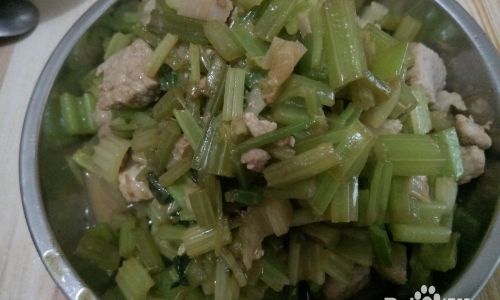
Preparation: The Foundation of Flavor
-
Cleaning and Trimming:
- Rinse the celery stalks under cold water, gently scrubbing away any dirt. Trim off the base and the leafy tops (save the leaves for garnish if desired).
- Use a vegetable peeler to remove tough strings from the outer layers of thicker stalks. This step ensures a tender bite without any chewy fibers.
-
Cutting Technique:
- Slice the celery diagonally into 1/4-inch thick pieces. Angled cuts maximize surface area, allowing the celery to cook evenly and absorb seasonings better.
- Mince the garlic and ginger finely. If using celery leaves, chop them roughly for garnish.
-
Mise en Place:
Have all ingredients prepped and within reach. Stir-frying is a quick process, so organization is key to avoiding overcooking.
Cooking Technique: High Heat, Quick Hands
Stir-frying is all about speed and heat control. Follow these steps for perfectly cooked celery:
-
Heat the Wok or Skillet:
Place your wok or large skillet over high heat. Allow it to smoke lightly before adding oil. This ensures the pan is hot enough to sear the celery without steaming it.
-
Aromatics First:
Add the oil and swirl to coat the pan. Toss in the garlic and ginger, stirring constantly for 10–15 seconds until fragrant but not browned. Burnt garlic will impart bitterness, so move quickly.
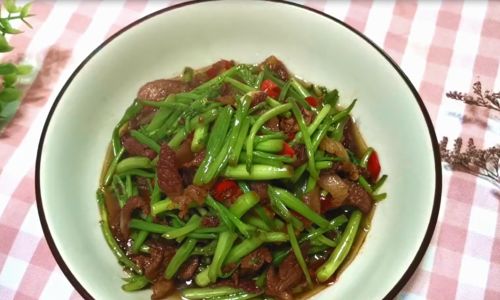
-
Stir-Fry the Celery:
- Add the celery to the pan in a single layer if possible. Avoid overcrowding, as this lowers the pan’s temperature and leads to steaming instead of searing.
- Stir-fry vigorously for 2–3 minutes. The celery should retain its vibrant green color and a slight crunch. Overcooking will result in mushy, limp stalks.
-
Seasoning:
- Drizzle the soy sauce and oyster sauce (if using) around the edges of the pan. This allows the sauce to caramelize slightly before tossing the celery to coat evenly.
- Sprinkle in the salt and white pepper. Taste and adjust seasoning as needed.
-
Finish with Flair:
- Drizzle sesame oil over the celery and toss once more. This final touch adds a layer of aromatic depth.
- Garnish with chopped celery leaves or a sprinkle of toasted sesame seeds for visual appeal.
Tips for Perfect Stir-Fried Celery
-
Crispness Control:
For extra crunch, blanch the celery in boiling water for 30 seconds before stir-frying. Drain and pat dry thoroughly to prevent sogginess.
-
Flavor Variations:
- Spicy Kick: Add a dried red chili or a dash of chili oil during the aromatics stage.
- Umami Boost: Incorporate a teaspoon of miso paste dissolved in water or a splash of fish sauce.
- Citrus Zing: Finish with a squeeze of lime juice or a grating of lemon zest.
-
Protein Pairings:
Toss in cooked shrimp, diced tofu, or sliced chicken breast during the final minute of cooking for a complete meal.
-
Vegetable Add-Ins:
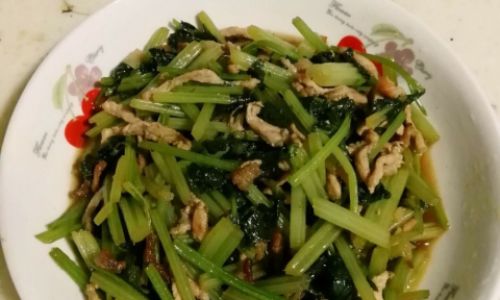
Enhance the dish with bell peppers, carrots, or mushrooms. Cut them to match the celery’s size for even cooking.
Common Mistakes to Avoid
-
Overcrowding the Pan:
Cook in batches if necessary. Overcrowding lowers the pan’s temperature, leading to steamed vegetables instead of seared ones.
-
Underseasoning:
Celery’s mild flavor benefits from generous seasoning. Don’t be shy with soy sauce or salt.
-
Overcooking:
Err on the side of undercooking. The residual heat from the pan will continue softening the celery slightly after removing it from the stove.
-
Using Old Celery:
Wilted or rubbery celery lacks flavor and texture. Always opt for fresh, crisp stalks.
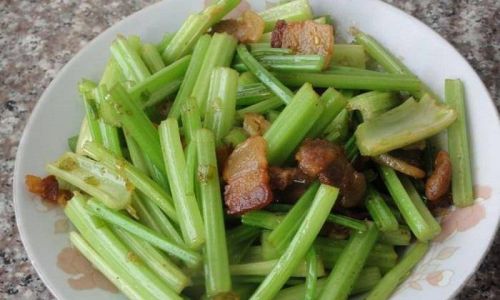
Serving Suggestions
Stir-fried celery is incredibly versatile. Here’s how to enjoy it:
- As a Side Dish: Pair with steamed rice, quinoa, or noodles for a light meal.
- In Wraps or Lettuce Cups: Use the celery mix as a filling for lettuce wraps, topped with crushed peanuts.
- With Noodles: Toss into lo mein or chow mein for added crunch.
- In Salads: Allow the stir-fried celery to cool, then mix with cherry tomatoes, cucumbers, and a tangy vinaigrette.
The Science Behind Stir-Frying
Understanding the chemistry of stir-frying can help you master the technique:
- Maillard Reaction: The high heat caramelizes the natural sugars in celery and garlic, creating complex flavors.
- Emulsification: Adding sauces to a hot pan helps them adhere to the vegetables rather than pooling at the bottom.
- Retention of Nutrients: Quick cooking preserves celery’s vitamin C content, which degrades with prolonged heat exposure.
Cultural Context: Stir-Frying Across Cuisines
While stir-frying is synonymous with Chinese cuisine, variations exist globally:
- Korean: Add gochujang (fermented chili paste) and sesame seeds for a spicy-sweet twist.
- Italian: Toss with olive oil, Parmesan, and toasted pine nuts post-stir-fry.
- Mexican: Mix with lime juice, cilantro, and a pinch of cumin for a zesty side.
Sustainability Tip: Using Every Part of the Celery
Reduce food waste by utilizing celery scraps:
- Leaves: Blend into pestos, soups, or stocks.
- Trimmings: Simmer in water with vegetables to make a flavorful broth.
- Stalk Ends: Freeze and use later for adding to soups or stews.
Troubleshooting Guide
- Soggy Celery: Next time, ensure the pan is hot enough and avoid adding liquid.
- Bland Flavor: Increase aromatics like garlic or ginger, or add a splash of rice vinegar for acidity.
- Burnt Aromatics: Reduce heat slightly and stir more vigorously during the initial cooking phase.
Conclusion: Elevate the Everyday
Stir-fried celery is a testament to the idea that simplicity can be profound. With just a handful of ingredients and a few key techniques, you can transform this ordinary vegetable into a dish that delights the senses. Whether you’re rushing through a weeknight dinner or hosting a casual gathering, this recipe offers a canvas for creativity. Experiment with seasonings, proteins, and presentations to make it your own. The next time you bring home a bunch of celery, remember: it’s not just a crudité platter filler—it’s a culinary chameleon waiting to shine.
By mastering the art of stir-fried celery, you’ll gain a deeper appreciation for the interplay of texture, flavor, and technique in cooking. So grab your wok, heat the pan, and let the sizzle begin. Your taste buds—and your health—will thank you.
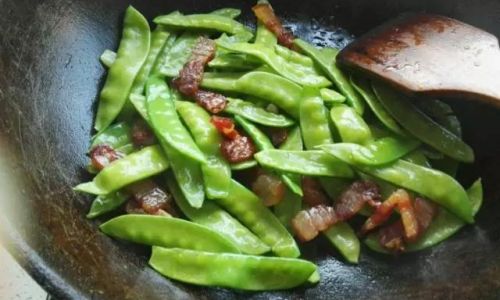
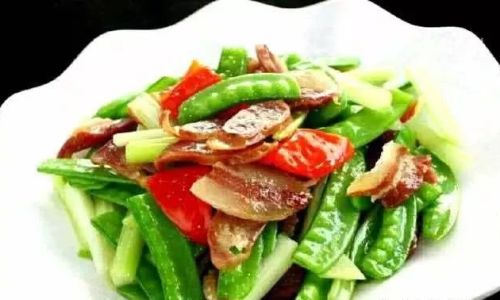
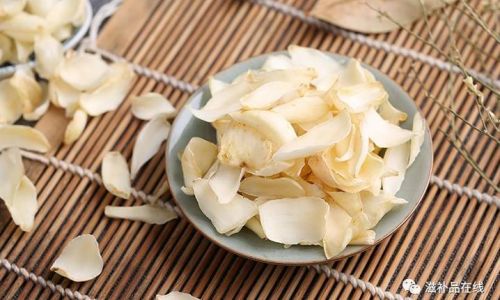


0 comments